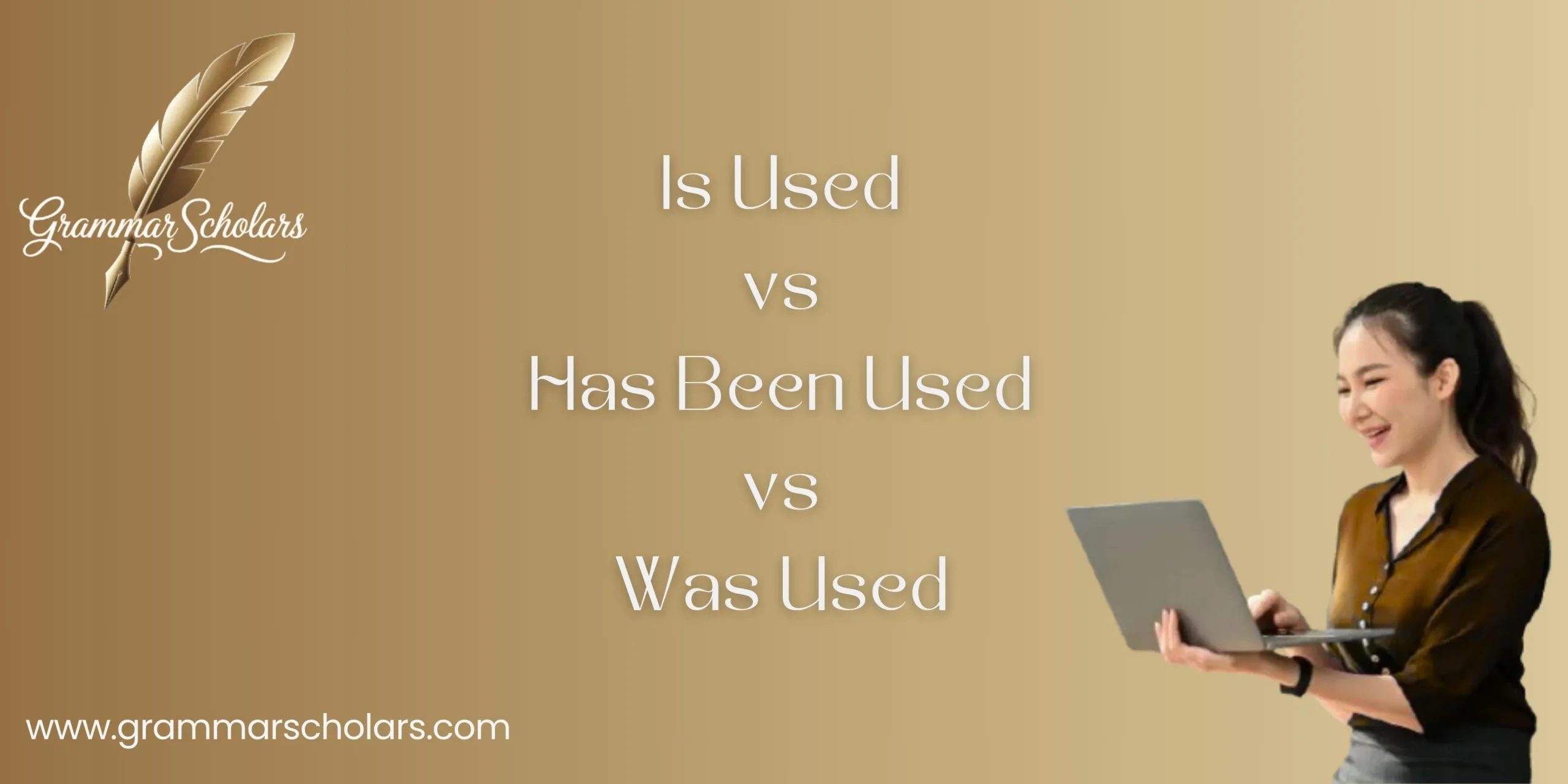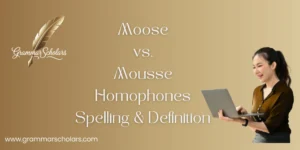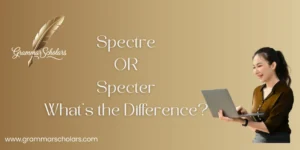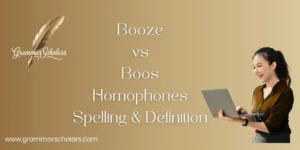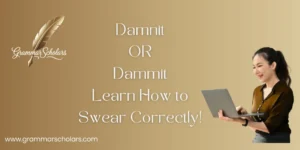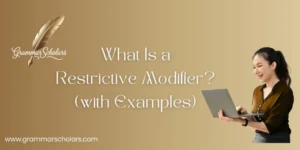When you’re writing, the choice between is used vs has been used vs was used can affect how your sentence conveys time and intent. Understanding this difference matters a lot, especially in academic or professional settings. While they all seem similar at a glance, each phrase tells a different story about time, context, and action, making your message more precise. The trick is to stop, review your sentence, and consider what you want to communicate- a fact, a completed action, or a result of a past event?
In grammar workshops, learners often get confused until they understand the core purpose of these passive structures. Is the action ongoing, recently completed, or clearly in the past? That’s the question. Once you connect the tense to the timeline, your writing improves significantly. A clean, professional sentence depends on more than just vocabulary- it’s the correct tense that gives it weight. This small grammatical choice ensures your reader receives the message exactly as you intended.
Engaging with proper verb tense isn’t just academic- it shapes how your message lands. Let’s dive deep into mastering is used vs has been used vs was used to help you write with clarity, confidence, and flair.
Introduction: Why Verb Tense Matters More Than You Think
Picture this: you email a client, “The file was used to prepare last month’s report.” But last month hasn’t arrived yet- you meant “has been used.” Suddenly, your message confuses rather than clarifies.
Misusing tense can:
- Create ambiguity about timing
- Undermine your professional tone
- Lead readers to question your attention to detail
By the end of this blog post, you’ll:
- Understand when to use each tense correctly
- Spot and fix common mistakes
- Gain tools to write clearer, more effective sentences
Overview: Key Differences Between “is used”, “has been used”, and “was used”
Let’s lay out a snapshot overview:
| Phrase | Structure | When to Use |
| is used | is + past participle (passive) | Present, ongoing actions or facts |
| has been used | has been + past participle | Past action with present relevance |
| was used | was + past participle | Completed past actions |
is used: for general practices (“Steel is used in car frames.”)- has been used: when the past action still matters (“That tool has been used recently.”)
- was used: for actions completed in the past (“The tool was used yesterday.”)
Breaking Down the Tenses: What Each One Means
“is used” – Present Simple Passive Voice
Structure & Purpose
- Formula: Subject + is used + [by agent]
- Use it when talking about present habits, ongoing routines, or facts.
When to Use It
- General routines:
- “This shampoo is used by millions daily.”
- Simple truths:
- “Wood is used for building furniture.”
- Technical instructions:
- “The keyboard is used to type commands.”
Examples
- “This app is used worldwide.”
- “Erasers are used to correct mistakes.”
- “Water is used in cooling systems.”
- “A hammer is used to drive nails.”
- “This code is used for troubleshooting.”
Common Errors
- Mistaking it for the past tense:
- ❌ “The camera is used to yesterday.”
- ✅ “The camera was used yesterday.”
“has been used” – Present Perfect Passive Voice
Structure & Significance
- Formula: Subject + has been used
- Indicates a past action with relevance now.
When to Use It
- Something happened before, but it still matters:
- “The software has been used successfully.”
- Ongoing effects:
- “That method has been used across industries.”
Examples
- “This medicine has been used for decades.”
- “The browser has been used to test compatibility.”
- “That phrase has been used in numerous speeches.”
- “The facility has been used recently for filming.”
- “The term has been used a lot in journalism.”
How It Implies Relevance
Because it connects past events to now, it adds immediacy.
- “It has been used” → still useful, significant, or ongoing.
“was used” – Simple Past Passive Voice
Structure & Context
- Formula: Subject + was used
- Places an action squarely in the past, with no direct link to now.
When to Use It
- Completed past events:
- “The microphone was used in yesterday’s presentation.”
- Historical descriptions:
- “The steam engine was used in the 1800s.”
Examples
- “The car was used for the test drive.”
- “That feature was used during the demo.”
- “This space was used as a workshop.”
- “The term was used in an article last year.”
- “The software was used on one specific project.”
Key Distinction
- Was used tells us it’s done.
- No lingering relevance or ongoing usage implied.
Visual Comparison: When to Use Each (Infographic or Chart)
You’d see something like this:
- is used (Present Passive) → Ongoing / Current
- has been used (Present Perfect Passive) → Past action impacting the present
- was used (Simple Past Passive) → Completed past action
That timeline clarifies when to pick which phrase.
Common Mistakes Learners Make (And How to Fix Them)
Learners often trip up by:
- Swapping has been and was
- Overusing passive voice unnecessarily
- Mixing tenses with time markers incorrectly
Mistake Examples & Fixes
| Incorrect | Why It’s Wrong | Corrected Version |
| “The tool was used this morning.” | Morning hasn’t passed (if said before) | “The tool has been used this morning.” |
| “The website was used last year.” | Inconsistent tense/time | “The website was used last year.” |
| “Oil was used yesterday.” | Confusing present with past | “Oil was used yesterday.” |
How Choices Shape Clarity and Tone
Consider:
- “The software is used daily.” → Neutral, factual
- “The software has been used daily.” → Highlights ongoing relevance
- “The software was used daily.” → Past habit, no longer necessarily true
Case Study:
Marketing email sent to customers:
- Wrong: “Our service was used by 10,000 users this month.” → Sounds like usage stopped.
- Better: “Our service has been used by 10,000 users this month.” → Implies momentum.
- Alternative: “Our service is used by 10,000 users every month.” → General pattern, strong fact.
Expert Tips for Tense Confidence
- Ask yourself: Is the action finished? Still relevant?
- Look for time markers: “yesterday” → was, “recently”/“already” → has been.
- Limit passive voice unless the focus needs to stay on the action or object.
- Read sentences out loud– feel the timing?
- Trust, but verify: Write, then check with Grammarly, style guides, or a mentor.
Related Tense Confusions (Brief Notes + Mini Glossary)
- is using/was using/has been using → emphasizes continuous action
- has been vs was (w/out “used”) → “She has been busy.” vs “She was busy yesterday.”
- Passive voice → Avoid unless needed; active voice often shines brighter
- Even native speakers mix this up under pressure
Practice Time: Test Your Understanding
Fill in the blanks:
- The software ___ (is used/has been used/was used by developers today.
- That printer ___ (is used/has been used/was used last week.
- This method ___ (is used/has been used/was used) for generations.
Answers
- has been used – Indicates usage earlier and relevance now
- was used – Completed in the past
- is used – Still standard today
Quick Reference Guide (Cheat-Sheet)
| Phrase | Meaning | Use | Example |
| is used | Ongoing | Present routines/facts | “Gold is used in electronics.” |
| has been used | Past-to-present | Actions with current impact | “This drug has been used widely.” |
| was used | Completed | Historical or one-off past action | “It was used in 1995.” |
Precision Opens Doors
Nailing the difference between is used vs has been used vs was used sharpens your writing, accelerates trust, and elevates your professional tone. Practice, reflect, and stay intentional- tenses matter.
Resources for Deeper Mastery
- Grammarly: Present Perfect Guide
- CAMBRIDGE: Passive Voice Rules
- Purdue OWL: Tense Usage
You May Also Like…
- Cleanup vs Clean Up
- Historic vs Historical
- Photo vs Picture vs Image
- Wright vs Write
- Yoghurt vs Yogurt
Final Thoughts
Getting the difference right between “is used,” “has been used,” and “was used” might seem minor, but it’s one of the most powerful ways to elevate your communication. Whether you’re writing a professional email, academic essay, technical manual, or even a resume, the tense you choose signals time, tone, and intent.
Choosing the wrong form can muddle your message:
- Using “was used” when the action still affects the present can make your writing seem out of touch.
- Opting for “has been used” too liberally may weaken clarity, especially when timing is specific.
- Overusing “is used” may strip sentences of the nuance that context demands.
Here’s the truth: native speakers often make these mistakes too. But with this guide, you’re already a step ahead. You’re building grammatical precision, and that skill will set you apart, personally and professionally.
So, the next time you’re stuck between “has been used” or “was used,” ask:
- Is this still relevant now? → Use has been used.
- Did it happen once in the past and is now done? → Use was used.
- Am I describing a general truth or a current habit? → Use is used.
The difference is subtle. But the impact is significant.
“Good grammar is credibility.” – Amanda Patterson
So keep learning. Keep writing. And keep choosing the right words at the right time.
FAQs
What is the difference between “is used” and “was used”?
“Is used” refers to a current or habitual action (e.g., “Paper is used for printing”), while “was used” refers to a completed action in the past (e.g., “Paper was used yesterday to print the flyers”).
When should I use “has been used” instead of “was used”?
Use “has been used” when the action occurred in the past but still holds relevance in the present. For example: “This technique has been used for years in therapy.” If the action is finished and time-specific, use “was used”.
Is “has been used” in the passive voice?
Yes. “Has been used” is the present perfect passive voice. It combines the perfect aspect (has been) with a passive construction (used), showing a past action with present implications.
Can I say “is being used” instead of “is used”?
Yes, but with nuance. “Is being used” emphasizes the ongoing nature of the action right now (“The room is being used for a meeting”), while “is used” describes general or habitual actions (“The room is used for classes”).
Why is verb tense so important in professional writing?
Tense signals when something happens. That timing affects how others interpret your meaning. Using the correct tense boosts clarity, trust, and professionalism, especially in formal writing like resumes, reports, or academic papers.
